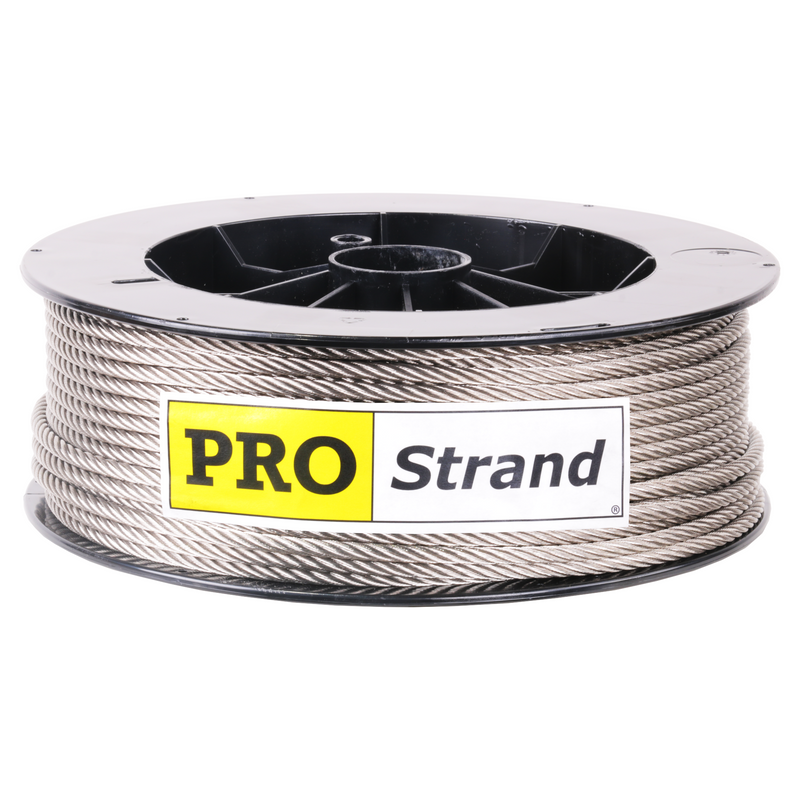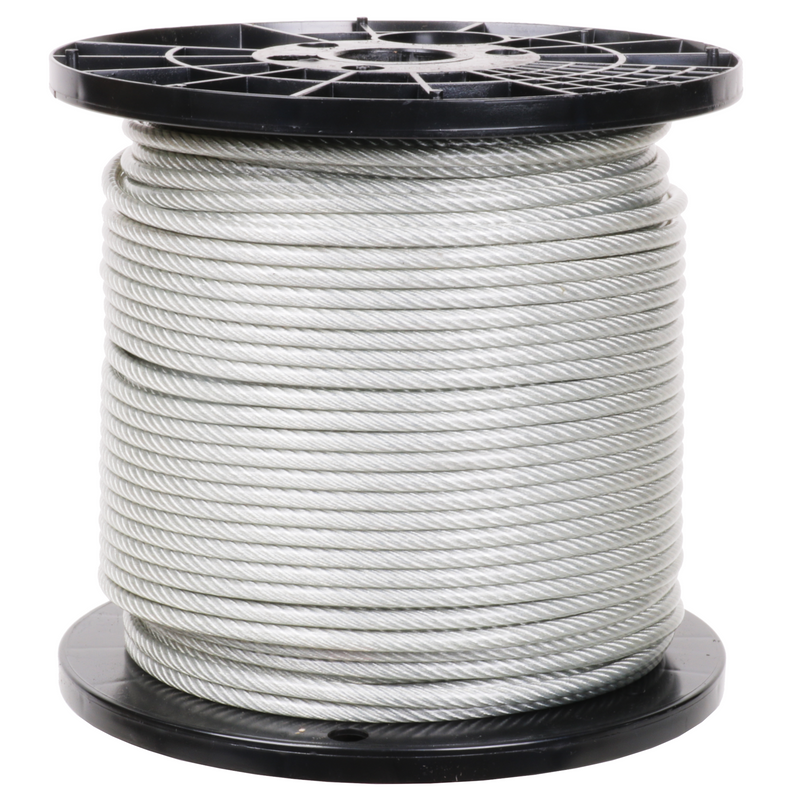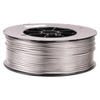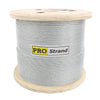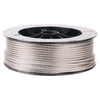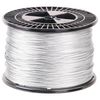When it comes to selecting the right cable for your application, the first thing you want to consider is the cable construction. Navigating our site, you might notice different types of cable denoted by what seems like a math equation (e.g. 7x19, 1x19…) This refers to construction, physical properties, and best real-world applications for that type of wire rope or cable.
This article is meant to explain the different cable constructions, materials, and coatings, as well debunk some common cable and wire rope myths.
Cable Construction Types

7x19
7x19 is the among the most popular cable and can be found in many rigging projects and applications. It’s constructed of seven twisted strands of nineteen wires. From lifting to suspending to adding support to flagpoles and trees, 7x19 excels in all this and more. It’s strong, flexible, is available in a wide variety of sizes and coating types and is universally available.

1x19
In the world of architectural installations and fall prevention systems, this is the preferred cable choice. 1x19 cable is constructed of nineteen wires in one strand which gives this cable stiffness and little to not stretch. It holds its tension well over time, making it great for interior design, standing rigging on sailboats, and most popularly, stainless-steel cable railing systems.

7x7
This cable is the middle ground between 1x19 and 7x19 regarding flexibility and stretch. Many choose this 7x7 for general-purpose applications such as marine rigging, interior design, and light-duty suspension, like courtyard string lighting and artwork mounting.
Cable Materials and Coating Types
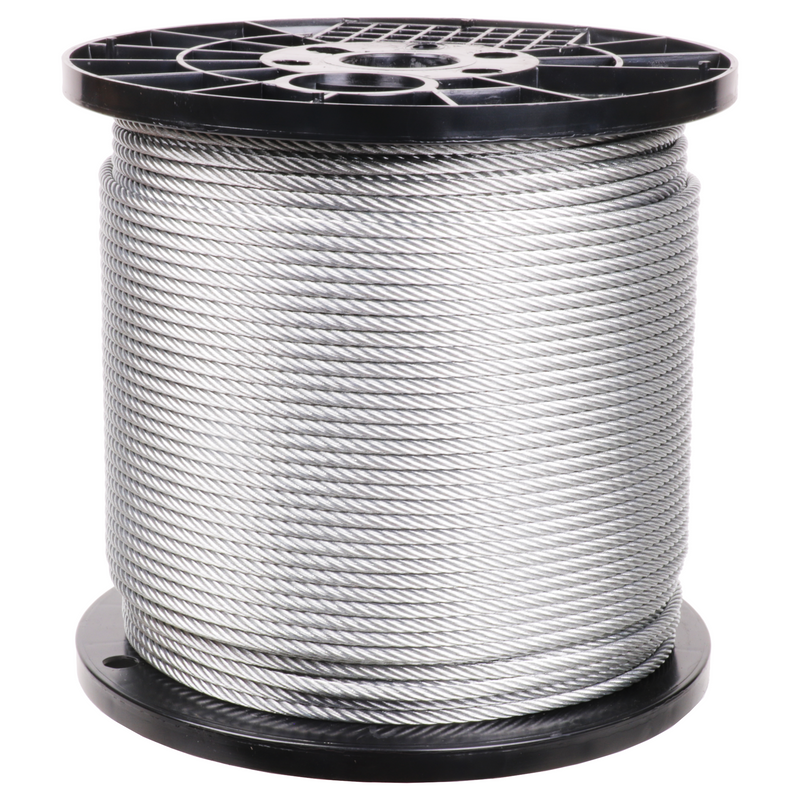
Hot-dipped Galvanized Cable
To achieve this strong cable or wire rope, the individual wires of the steel cable are drawn through a bath of molten zinc, hence “hot-dipped”. This type of galvanization is higher quality than other types of coatings, providing it with a longer-service life. It’s a great choice for high-capacity, general purpose, and even marine applications, however since it is still a coating, it could wear or chip off over time. It’s important to inspect it periodically for rust or corrosion. Any compromised hot-dipped galvanized wire rope will need to be replaced and salvaged, or in worse cases, scrapped by cutting into three- or four-foot sections before discarding.
Types 304 and 316 Stainless Steel Cable
Both types 304 and 316 stainless steel (also known as marine-grade) are great corrosion resistant cable solutions. You’ll find that 304 is more economically efficient than type 316. The latter is the higher grade of stainless-steel since it contains molybdenum, which provides this cable type superior corrosion resistance. At a higher price point, type 316 holds out against ambient and chloride contaminants and our recommendation for saltwater and high-salinity environments. Whether 304 or 316, stainless-steel cable is no stranger to rust attacks, so it’s important to periodically remove any microscopic contaminant build-up by rinsing it off with fresh water and applying rust preventative measures.
Vinyl Coated Cable
Both stainless and galvanized cable is offered with a relatively thick layer of vinyl for protection against chemicals, chlorides, and microscopic contaminants. It’s used in high traffic areas where skin-to-cable contact is common. This layer will need to be stripped off to expose the cable inside whenever splicing is required so sleeves, ferrules, and other splicing components will have better contact with the load bearing cable. If long term exposure to heat and UV-rays is expected, be sure to check the vinyl coating regularly for dry-rot.
Addressing Common Cable Myths
Is “Aircraft Cable” the same as “Wire Rope” or "Cable”?
Colloquially, 7x19 cable can be referred to as “aircraft cable” since aviation industries often apply 7x19 cable as control cables which are essential to operate various aircraft. It is not to be confused with cable rated for aircraft use. True aircraft cable is rigorously certified and comes pre-lubricated. It’s important to note that our site does not offer any certified aircraft control cable.
What’s the Difference Between “Wire Rope” and “Cable”
Cable and wire rope can be used to achieve the same purposes; however, the difference comes down to thickness and construction Steel cable is rarely offered outside the range of 1/16” – 3/8”, whereas wire rope can be found from 1/4” all the way up to 6”. Visit our cable construction guide to learn more about the differences between Wire Rope and Cable.
For additional information see our wire rope guides and videos.


